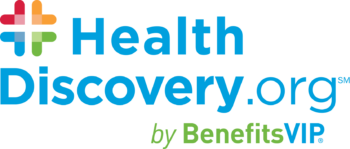Slogging through the healthcare system and using my health & welfare benefits is about as fun as running a race with an infected ingrown toenail. A case in point:
Ring, ring, ring….
Doctor’s Office: “What is your co-insurance?”
Me: “I only have one provider; no secondary insurance.”
Doctor’s Office: “And what’s your co-insurance with that provider?”
Me: “My co-pay is $40.”
Doctor’s Office: “A co-pay and co-insurance are different. Do you know what your co-insurance is?”
Me: “I already told you, I don’t have secondary insurance.”
Doctor’s Office: “Call your insurance carrier.” CLICK
It’s a lot to remember: benefits plan details, referrals needed, network providers, etc. Add the stress of symptoms + confusing financial obligations + doctors’ snap diagnoses + under-par bedside manner and you get one frustrated patient. I’ve spent so much time engaged with my company’s employee advocacy service, BenefitsVIP®, that I owe my rep a spa day.
I’ve experienced a lot when dealing with the healthcare system and insurance in my 40+ years. I’d like to share what I’ve learned along the way, uncensored!
Names/details have been censored to protect the privacy of us hypochondriacs.
Real Research. It’s out there.
For years I had unexplained pain in my hip that I noticed, but mostly ignored. Until it couldn’t be ignored any longer. One day I couldn’t get up off the couch. Sounds heavenly, I know, but I was a single mom, so I couldn’t be down and out. A friend volunteered to take me to the doctor. Getting in and out of the car to the doctor’s office and then to the hospital, that day was the most painful thing I’ve ever experienced. It felt like Chef Ginsu was hibachi training on my hip flexor! After three days in the hospital, blood tests, X-rays, MRIs, a pelvic exam, and a delightful, uh, proctology exam (in front of students in training, no less) the doctors came up with this:
That’s it, just “I don’t know.” I was discharged with a pain patch and sent on my way. It took a good week before I could sleep on my side again, and after that, the pain was still intermittent. When I phoned my primary care physician (PCP) to discuss next steps, he turned me away. Yes, really. He said he didn’t know what else to do for me. No suggestions, no support, and certainly no sympathy. So as I moaned about this to my hairdresser, a health-conscious yogi, she suggested that I look into nightshade vegetables1. Apparently, those with a sensitivity to this group of plant-based foods can experience joint pain (in addition to a host of other unpleasant symptoms). So after some sleuthing, I decided to cut back on my potato, tomato and eggplant intake (my most consumed from the group). And now?
Hip pain → GONE! Aside from an occasional indulgence in eggplant parm that leaves me limping back to the car.
So I ask you, why didn’t my family doctor, ER doc, orthopedist, gyno or proctologist ever ask me about my nightshade intake2?
We have to be active healthcare consumers. My random hives subsided considerably when I increased my Vitamin D intake. You know who told me that? The Internet. Real research. It’s out there.
And so is real advocacy. A true benefits advocate will walk the insured person through their plan coverage, assist with claims issues, and help educate them on proper health benefits use for least financial impact (to both them and to their employer). A benefits advocate doesn’t have to be knowledgeable in nightshade foods or hives, but s/he should be able to recommend in-network specialists and advise patients in expected out-of-pocket costs of care.
Don’t underestimate the power of word of mouth.
Last year’s affliction, sporadic headaches, and dizziness was diagnosed through a string of hearsay, suspicion and alternative therapy. MedicineNet, Inc. identified 17 types of headaches with varying causes3. While carping to my partner-in-crime at work about it, she wisely suggested I see an ENT because my symptoms sounded like vertigo. I followed her advice and the doctor suspected TemporoMandibular Joint Disorder instead. “TemporoMandibular Joint Disorder?!” I cried. “Oh jeez, if I can’t pronounce it, it must be bad!”
Dr. TMJ calmly explained that eating soft foods and applying warm compresses to my jaw joints should do the trick, and asked me to kindly release the now crumpled chest of his monogrammed oxford. I mentioned this later to my chiropractor (did I mention I get sciatica?), who immediately bound into a prodding investigation of taps and swipes (P-DTR® technique4. After pressing here and there (no, not there!), Dr. Poke discovered the source of my jaw pain: a strained eye muscle. A visit to my eye doctor uncovered the need for a stronger eyeglass Rx.
So, the diagnosis three team-playing doctors later?
Deteriorating Vision → Eye Muscle Strain → TMJ pain → Headaches and Dizziness
Case closed, thanks to my caring co-worker who set this thriller in motion (and my BenefitsVIP employee benefits advocate who assured me that a specialist visit would only cost $40 out-of-pocket).
I urge everyone to do their own research, especially when symptoms are erratic or not well defined. Investigate your symptoms, explore your care options and know what your plan covers, and by all means scrutinize those medical carrier statements: Explanation of Benefits (EOBs)!
Real Rights. You have them.
The Affordable Care Act, also known as the ACA or Obamacare, deemed preventative service visits as free with no out-of-pocket expense to the patient. But what if your doctor or staff code the visit as diagnostic? A few years ago, I went for an annual physical and during the visit mentioned that I was going to see my chiropractor. Doc said he’d write me a referral but I told him I didn’t need one with my plan. Upon leaving, sure enough, I was handed a referral. Then I got a bill for an office visit and when I inquired with the staff they told me that if the Doc wrote a referral it was a diagnostic primary care visit. Of course, I fought it. My plea was denied, so my type-A, Sicilian Scorpio personality kicked in. The bill was eventually dropped.
Since the 1970s many hospitals issue a “Patient’s Bill of Rights” setting medical care expectations for patients. Then, in 2010 the ACA bill of rights5 spoke to insured’s health coverage rights with their insurance carriers. If you’re unsure of where to start, talk to an employee benefits advocate. That could be your employer’s benefits manager or someone else in HR, or a real third-party employee advocacy resource like BenefitsVIP.
Real Care. A lost art?
The TMJ example above is a case of solid medical care at work. Multiple physicians worked to piece together the root of my symptoms. Another is the ER staff who never once made me feel foolish for taking an ambulance to the hospital at 2:30 a.m. with arm numbness and chest pains.
On the other hand, I recall the spinal tap that, when it came back clean, left me in a medical ghost town. The PCP who left a note in my file (yes, I peeked) that read, “I don’t have time” [to call in a refill Rx for the patient]; the step therapy that landed me in the hospital while pregnant with dehydration from hyperemesis6 because the specialty drug I had been taking, and that did work, was considered too expensive. How’d that eventual hospital claim work out for ‘ya, [insurance carrier]?
While it’s easy to scoff at the poor bedside manner of some physicians these days, I’ll bet they’re dealing with their own distractions as large physician groups and hospital systems continue to buy up private practice7. Doctors and their staff are often times met with new office hours, visit time restrictions, new cancellation policies, insurance plan changes, new facility classifications, and more. The stress this puts on the office can easily affect patient care, while it shouldn’t. This shift is largely due to stricter federal, state and insurance regulations and higher malpractice insurance premiums.
Please, to all reading this, be an active healthcare consumer. Question everything. Be a personal advocate for your health. Do your own research to stay on point with your health & wellness, exercise your rights if you feel mistreated, and seek the help of a benefits advocate when needed.
1 Livestrong, “List of Nightshade Vegetables and Fruits”
2 Ibid.
3 NCBI, “Current Issues Regarding Complementary and Alternative Medicine in the United States”
4 MedicineNet.com “Headache”
5 p-dtr.com, “What is Proprioceptive Deep Tendon Reflex?”
6 Centers for Medicare & Medicaid Services, “The Affordable Care Act’s New Patient’s Bill of Rights”
7 MedicinelinePlus, “Hyperemesis Gravidarum”
8 Consumer Reports, “When Your Doctor Joins a New Practice, Here’s How Your Care Could Change”














